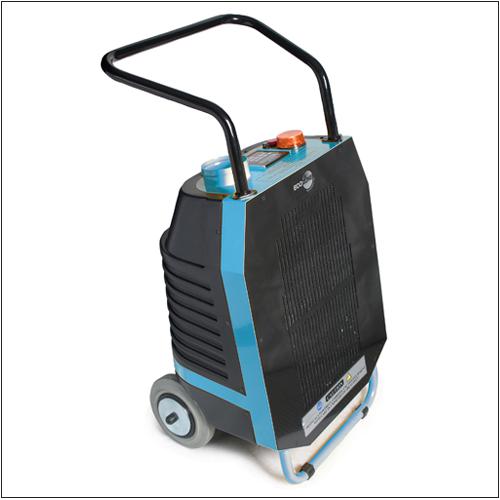
Ozone is a naturally occurring substance in nature that we cannot live without. Ozone is an activated form of oxygen with three atoms where regular oxygen has two. Ozone in the upper atmosphere filters out harmful rays from the sun without which all life on earth would cease to exist. Closer to home ozone is produced by lightning in thunderstorms. I'm sure you have experienced the freshness in the air after a storm. Ozone is very unstable and has an average half life of 20 minutes, which is why ozone must be produced at the point of use and cannot be stored in a container for later use.
Ozone will cast off it's third atom onto any other organic element thereby oxidizing it or converting it into another substance. In the case of odors it will convert a foul-smelling substance into a non-odorous substance naturally, with no unhealthy chemicals to buy, store, or use. Once ozone has done it's job it converts back to oxygen. Ozone will also deactivate and destroy molds, bacteria, virus, fungus, and mildew.
Ozone is "active oxygen", nature's special element. (Each ozone molecule consists of three oxygen atoms.)
·
Ozone is a natural purifier.
·
Ozone is created in nature by the combination of oxygen in air and
the ultraviolet rays of the sun or by the corona discharge that occurs during a
lightning storm.
·
Ozone has the clean, fresh scent noticed after a rainstorm.
·
Ozone is the most powerful oxidizer safely used.
·
Ozone is the alternative water purifier to traditional chemicals
such as chlorine and bromine.
·
Ozone destroys bacteria, viruses, mold, and mildew.
·
Ozone eliminates spores, cysts, yeast, and fungus.
·
Ozone oxidizes iron, sulfur, manganese and hydrogen sulfate.
·
Ozone eliminates oils and other contaminants in water.
·
Ozone eliminates odors in air, such as smoke.
·
Ozone keeps water clean and sparkling clear.
·
Ozone keeps food and water fresh
·
Ozone leaves no chemical by-products in water.
·
Ozone leaves no chemical taste or smell.
·
Ozone will not burn eyes or make them red or irritated.
·
Ozone will not irritate or dry out skin, nose, or ears.
·
Ozone will not leave a chemical film on material or skin.
·
Ozone will not discolor or damage hair or clothing.
·
Ozone rids water and air of unhealthy microorganisms.
·
Ozone is NOT a carcinogen.
·
Ozone is not flammable and will not explode.
·
Ozone is not a fire hazard.
·
Ozone will not damage electrical wiring, plumbing fittings or
pipes.
·
In 1906, Nice,
France built the first water purification plant to use ozone.
·
Los Angeles, California has the largest ozone drinking water
treatment plant in the world.
·
Most bottled water is purified by ozone.
·
Ozone is used to clean water and toxic waste.
·
Ozone purifies water in well and home drinking water systems.
·
Ozone systems have brought life back to "dead"
contaminated lakes and pools.
·
Ozone is used to purify air in hotel rooms, boats, RVs, cars, and
smoke/fire damaged structures.
·
Ozone is used in thousands of residential and commercial pools and
spas all over the world.
·
Ozone does not have to be purchased or stored.
·
Ozone is generated "on site" and is introduced into the
water or air automatically.
·
Ozone does not affect the pH balance of water, thus minimizing pH
adjustments.
·
Ozone helps reduce total dissolved solids in water so that the
water does not have to be changed as often.
·
Ozone eliminates much of the routine maintenance because it does
such an effective job keeping the water clean.